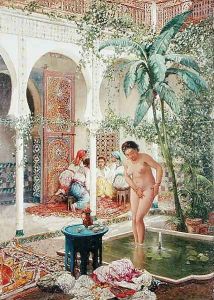Marc-Alfred Chataud Paintings
Marc-Alfred Chataud was a French landscape painter who was born in 1833 in Marseille, France. Although not as widely known as some of his contemporaries, Chataud was a competent artist who mainly focused on the idyllic countryside scenes and the tranquil beauty of nature. He was active during a period rich in artistic evolution, which saw the transition from traditional academic art to more modern movements such as Impressionism.
Chataud's artistic journey, like many of his era, began with rigorous academic training. He studied under notable figures of the time, which helped him develop a strong foundation in the techniques and principles of landscape painting. His works typically reflected the academic style, characterized by careful composition, detailed representation, and a focus on lighting and atmosphere. Throughout his career, Chataud continued to evolve his style, often incorporating elements from the Barbizon school, which emphasized painting en plein air (outdoors) and sought to capture the transient effects of light on the landscape.
Despite his dedication to his craft, Chataud did not achieve the same level of fame as some of his peers. Nevertheless, he exhibited his works at various salons and exhibitions, receiving recognition and accolades from art critics and the public alike. His paintings often depicted scenes from the French countryside and coastal regions, showcasing his ability to render natural environments with a sense of serenity and harmony.
Marc-Alfred Chataud passed away in 1908, leaving behind a body of work that, while not groundbreaking in the context of the dramatic shifts in the art world during his lifetime, represents a consistent and heartfelt portrayal of the French landscape. His paintings continue to be appreciated by art enthusiasts who value the traditional approach to landscape art and the beauty of the French countryside as seen through the eyes of a dedicated and skilled artist.
